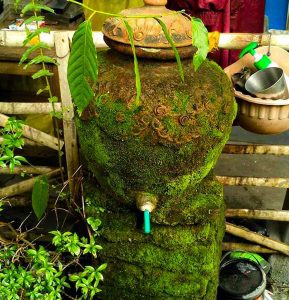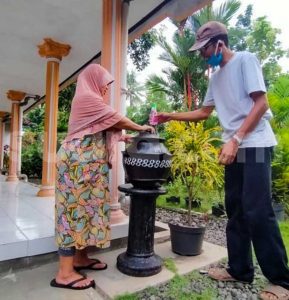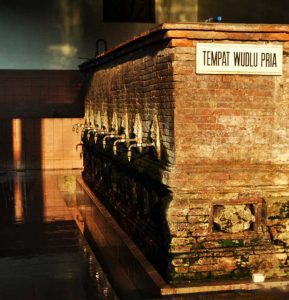The Ancestor’s Padasan Tradition: What is its Function?
"Padasan is a clay jar which is usually filled with water and serves to wash hands. The ancients often put a padasan in front of their house. This habit has even been one of the ways to spread Islam"Published by : Farida - 17/05/2022 10:37 WIB
3 Minutes read.
Jamupedia friends, Which of you often sees a clay jar in front of your grandma’s house during your time of mudik (annual home coming after to celebrate Eid al Fitr)? That’s what is called a padasan. The Big Indonesian Dictionary (KBBI, Kamus Besar Bahasa Indonesia) defines padasan as a clay jar with a spout (for ablution). In general, Padasan is not only a place for ablution, but rather a place to wash hands, feet, and face.

Sumber: koranpeneleh.id
The Origin of Padasan
It is not known for sure when and who was the initiator of the use of padasan in the archipelago. However, this habit can be safely said to have existed since tens or even hundreds of years ago.
One source that discusses an object similar to padasan is Yi Jing’s book, Kiriman Catatan Praktik Buddhadharman dari Lautan Selatan (Submissions to the Practice Records of Buddhadharman from the Southern Ocean). The book reveals that there was a habit of ablution among the monks who lived in the era of the Srivijaya Kingdom (650 AD-1377 AD).

Sumber: www.slideshare.net
Quoted from era.id which summarizes Yi Jing’s book, it was revealed that monks during the Srivijaya Kingdom used two jugs to store water. The jug is related to the rules of self-cleaning. These self-cleaning activities include washing hands, cleaning the body, and eating healthy foods.
From this information, it is likely true that Padasan has existed in the archipelago for hundreds of years. People have been doing things like washing their hands with running water since time immemorial.
Tradition of Padasan in Tanah Jawa
People in rural Java land often put a padasan in front of their house. This tradition has become a need of each person. Every morning they filled up the padasan in front of the house, so that it could be used for a day.

Sumber: jogja.suara.com
Usually, a Padasan is a jar made of clay with a hole on the lower part of the jar for a spout. The spout is usually accompanied with a stopper made from a piece of wood or a slice of rubber taken from a used rubber flip flop. There are also those who put a dipper from a coconut shell on their padasan.
This padasan is used either by the owner of the house or by other people visiting the house. The homeowner uses Padasan to wash their hands, feet and face after a day of working outside the home. Guests also usually do this with the aim of visiting in a clean condition, not carrying bacteria or viral diseases.
Padasan for the Spread of Islam
Along in people’s homes, padasan is also often found in prayer rooms or mosques in rural areas. This gradually gives the impression that the padasan is a place for ablution. This may have something to do with what Sunan Kudus did.
Quoted from era.id, the book Tasawuf Nusantara: Rangkaian Mutiara Sufi Terkemuka (Tasawuf Nusantara: The Leading Prominent Sufies Series) by Sri Mulyati (2006), reveals that Sunan Kudus (a prominent early preacher of Islam in Indonesia) once made a padasan with eight spouts.

Sumber: www.goodnewsfromindonesia.id
Sunan Kudus did it to assimilate with Hindu and Buddhist cultures that have existed before the coming of Islam. There used to be a teaching called Asta Sanghika Marga or the Eightfold Path. The number of spouts is meant as the eight paths of virtue to purify oneself.
Over time, the padasan, apart from being a means of washing in front of the house, is also considered a place for wudu (ablution). As the times change, the clay jars are indeed decreasing, but the concept is still adhered to the present time. Now, there are many forms of water containers to wash ourselves or for ablution purposes.








